 W
WMalaria is a mosquito-borne infectious disease that affects humans and other animals. Malaria causes symptoms that typically include fever, tiredness, vomiting, and headaches. In severe cases, it can cause yellow skin, seizures, coma, or death. Symptoms usually begin ten to fifteen days after being bitten by an infected mosquito. If not properly treated, people may have recurrences of the disease months later. In those who have recently survived an infection, reinfection usually causes milder symptoms. This partial resistance disappears over months to years if the person has no continuing exposure to malaria.
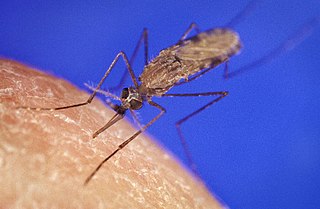 W
WAirport malaria, sometimes known as baggage, luggage or suitcase malaria, occurs when a malaria infected female Anopheles mosquito travels by aircraft from a country where malaria is common, arrives in a country where malaria is usually not found, and bites a person at or around the vicinity of the airport, or if the climate is suitable, travels in luggage and bites a person further away. The infected person usually presents with a fever in the absence of a recent travel history. There is often no suspicion of malaria, resulting in a delay in diagnosis and often death. Other causes of imported malaria need to be excluded first.
 W
WAnopheles is a genus of mosquito first described and named by J. W. Meigen in 1818. About 460 species are recognised; while over 100 can transmit human malaria, only 30–40 commonly transmit parasites of the genus Plasmodium, which cause malaria in humans in endemic areas. Anopheles gambiae is one of the best known, because of its predominant role in the transmission of the most dangerous malaria parasite species – Plasmodium falciparum.
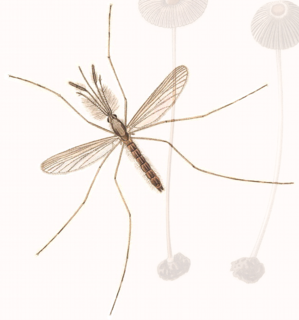 W
WAnopheles claviger is a mosquito species found in Palearctic realm covering Europe, North Africa, northern Arabian Peninsula, and northern Asia. It is responsible for transmitting malaria in some of these regions. The mosquito is made up of a species complex consisting of An. claviger sensu stricto and An. petragnani Del Vecchio. An. petragnani is found only in western Mediterranean region, and is reported to bite only animals, hence, it is not involved in human malaria.
 W
WAttractive toxic sugar baits or ATSBs are oral insecticides designed to reduce malaria infections by killing the host vector - the mosquito - rather than the parasite itself.
 W
WBeauveria bassiana is a fungus that grows naturally in soils throughout the world and acts as a parasite on various arthropod species, causing white muscardine disease; it thus belongs to the entomopathogenic fungi. It is being used as a biological insecticide to control a number of pests such as termites, thrips, whiteflies, aphids and different beetles. Its use in the control of bedbugs and malaria-transmitting mosquitos is under investigation.
 W
WThe buffy coat is the fraction of an anticoagulated blood sample that contains most of the white blood cells and platelets following density gradient centrifugation.
 W
WDichlorodiphenyltrichloroethane, commonly known as DDT, is a colorless, tasteless, and almost odorless crystalline chemical compound, an organochlorine. Originally developed as an insecticide, it became infamous for its environmental impacts. DDT was first synthesized in 1874 by the Austrian chemist Othmar Zeidler. DDT's insecticidal action was discovered by the Swiss chemist Paul Hermann Müller in 1939. DDT was used in the second half of World War II to limit the spread of the insect-born diseases malaria and typhus among civilians and troops. Müller was awarded the Nobel Prize in Physiology or Medicine in 1948 "for his discovery of the high efficiency of DDT as a contact poison against several arthropods".
 W
WThe Drugs for Neglected Diseases initiative (DNDi) is a collaborative, patients’ needs-driven, non-profit drug research and development (R&D) organization that is developing new treatments for neglected diseases, notably leishmaniasis, sleeping sickness, Chagas disease, malaria, filarial diseases, mycetoma, paediatric HIV, and hepatitis C. DNDi's malaria activities were transferred to Medicines for Malaria Venture (MMV) in 2015.
 W
WHaemozoin is a disposal product formed from the digestion of blood by some blood-feeding parasites. These hematophagous organisms such as malaria parasites, Rhodnius and Schistosoma digest haemoglobin and release high quantities of free heme, which is the non-protein component of hemoglobin. Heme is a prosthetic group consisting of an iron atom contained in the center of a heterocyclic porphyrin ring. Free heme is toxic to cells, so the parasites convert it into an insoluble crystalline form called hemozoin. In malaria parasites, hemozoin is often called malaria pigment.
 W
WThe history of malaria stretches from its prehistoric origin as a zoonotic disease in the primates of Africa through to the 21st century. A widespread and potentially lethal human infectious disease, at its peak malaria infested every continent, except Antarctica. Its prevention and treatment have been targeted in science and medicine for hundreds of years. Since the discovery of the Plasmodium parasites which cause it, research attention has focused on their biology, as well as that of the mosquitoes which transmit the parasites.
 W
WIndoor residual spraying or IRS is the process of spraying the inside of dwellings with an insecticide to kill mosquitoes that spread malaria. A dilute solution of insecticide is sprayed on the inside walls of certain types of dwellings—those with walls made from porous materials such as mud or wood but not plaster as in city dwellings. Mosquitoes are killed or repelled by the spray, preventing the transmission of the disease. In 2008, 44 countries employed IRS as a malaria control strategy. Several pesticides have historically been used for IRS, the first and most well-known being DDT.
 W
WIntermittent fever is a type or pattern of fever in which there is an interval where temperature is elevated for several hours followed by an interval when temperature drops back to normal. This type of fever usually occurs during the course of an infectious disease. Diagnosis of intermittent fever is frequently based on the clinical history but some biological tests like complete blood count and blood culture are also used. In addition radiological investigations like chest X-ray, abdominal ultrasonography can also be used in establishing diagnosis.
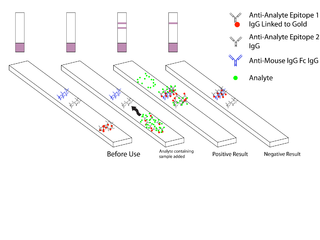 W
WMalaria antigen detection tests are a group of commercially available rapid diagnostic tests of the rapid antigen test type that allow quick diagnosis of malaria by people who are not otherwise skilled in traditional laboratory techniques for diagnosing malaria or in situations where such equipment is not available. There are currently over 20 such tests commercially available. The first malaria antigen suitable as target for such a test was a soluble glycolytic enzyme Glutamate dehydrogenase. None of the rapid tests are currently as sensitive as a thick blood film, nor as cheap. A major drawback in the use of all current dipstick methods is that the result is essentially qualitative. In many endemic areas of tropical Africa, however, the quantitative assessment of parasitaemia is important, as a large percentage of the population will test positive in any qualitative assay.
 W
WMalaria culture is the method to grow malaria parasites outside the body i.e. in an ex vivo environment. Although attempts for propagation of the parasites outside of humans or animal models reach as far back as 1912, the success of the initial attempts was limited to one or just a few cycles. The first successful continuous culture was established in 1976. Initial hopes that the ex vivo culture would lead quickly to the discovery of a vaccine were premature. However, the development of new drugs was greatly facilitated.
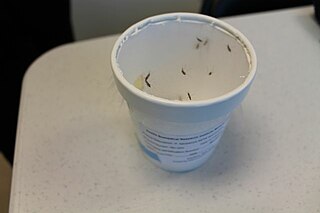 W
WA malaria vaccine is a vaccine that is used to prevent malaria. The only approved vaccine as of 2015 is RTS,S, known by the trade name Mosquirix. It requires four injections, and has a relatively low efficacy. Due to this low efficacy, the World Health Organization (WHO) does not recommend the routine use of the RTS,S vaccine in babies between 6 and 12 weeks of age.
 W
WThe administration of drugs to whole populations irrespective of disease status is referred to as mass drug administration (MDA).
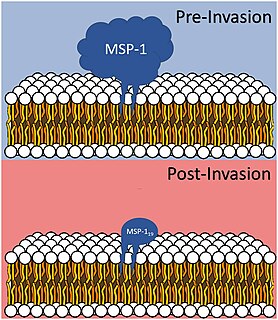 W
WMerozoite surface proteins are both integral and peripheral membrane proteins found on the surface of a merozoite, an early life cycle stage of a protozoan. Merozoite surface proteins, or MSPs, are important in understanding malaria, a disease caused by protozoans of the genus Plasmodium. During the asexual blood stage of its life cycle, the malaria parasite enters red blood cells to replicate itself, causing the classic symptoms of malaria. These surface protein complexes are involved in many interactions of the parasite with red blood cells and are therefore an important topic of study for scientists aiming to combat malaria.
 W
WMosquito control manages the population of mosquitoes to reduce their damage to human health, economies, and enjoyment. Mosquito control is a vital public-health practice throughout the world and especially in the tropics because mosquitoes spread many diseases, such as malaria and the Zika virus.
 W
WMosquito-malaria theory was a scientific theory developed in the latter half of the 19th century that solved the question of how malaria was transmitted. The theory basically proposed that malaria was transmitted by mosquitoes, in opposition to the centuries-old medical dogma that malaria was due to bad air, or miasma. The first scientific idea was postulated in 1851 by Charles E. Johnson, who argued that miasma had no direct relationship with malaria. Although Johnson's hypothesis was forgotten, the arrival and validation of the germ theory of diseases in the late 19th century began to shed new lights. When Charles Louis Alphonse Laveran discovered that malaria was caused by a protozoan parasite in 1880, the miasma theory began to subside.
 W
WPlasmodium is a genus of unicellular eukaryotes that are obligate parasites of vertebrates and insects. The life cycles of Plasmodium species involve development in a blood-feeding insect host which then injects parasites into a vertebrate host during a blood meal. Parasites grow within a vertebrate body tissue before entering the bloodstream to infect red blood cells. The ensuing destruction of host red blood cells can result in disease, called malaria. During this infection, some parasites are picked up by a blood-feeding insect, continuing the life cycle.
 W
WPlasmodium falciparum is a unicellular protozoan parasite of humans, and the deadliest species of Plasmodium that causes malaria in humans. The parasite is transmitted through the bite of a female Anopheles mosquito and causes the disease's most dangerous form, falciparum malaria. It is responsible for around 50% of all malaria cases. P. falciparum is therefore regarded as the deadliest parasite in humans, causing 405,000 deaths in 2018. It is also associated with the development of blood cancer and is classified as Group 2A carcinogen.
 W
WPlasmodium vivax is a protozoal parasite and a human pathogen. This parasite is the most frequent and widely distributed cause of recurring malaria. Although it is less virulent than Plasmodium falciparum, the deadliest of the five human malaria parasites, P. vivax malaria infections can lead to severe disease and death, often due to splenomegaly. P. vivax is carried by the female Anopheles mosquito; the males do not bite.
 W
WQuartan fever is one of the four types of malaria which can be contracted by humans.
 W
WSchüffner's dots refers to a hematological finding that is associated with malaria, exclusively found in infections caused by Plasmodium ovale or Plasmodium vivax.
 W
WWorld Malaria Day (WMD) is an international observance commemorated every year on 25 April and recognizes global efforts to control malaria. Globally, 3.3 billion people in 106 countries are at risk of malaria. In 2012, malaria caused an estimated 627,000 deaths, mostly among African children. Asia, Latin America, and to a lesser extent the Middle East and parts of Europe are also affected.